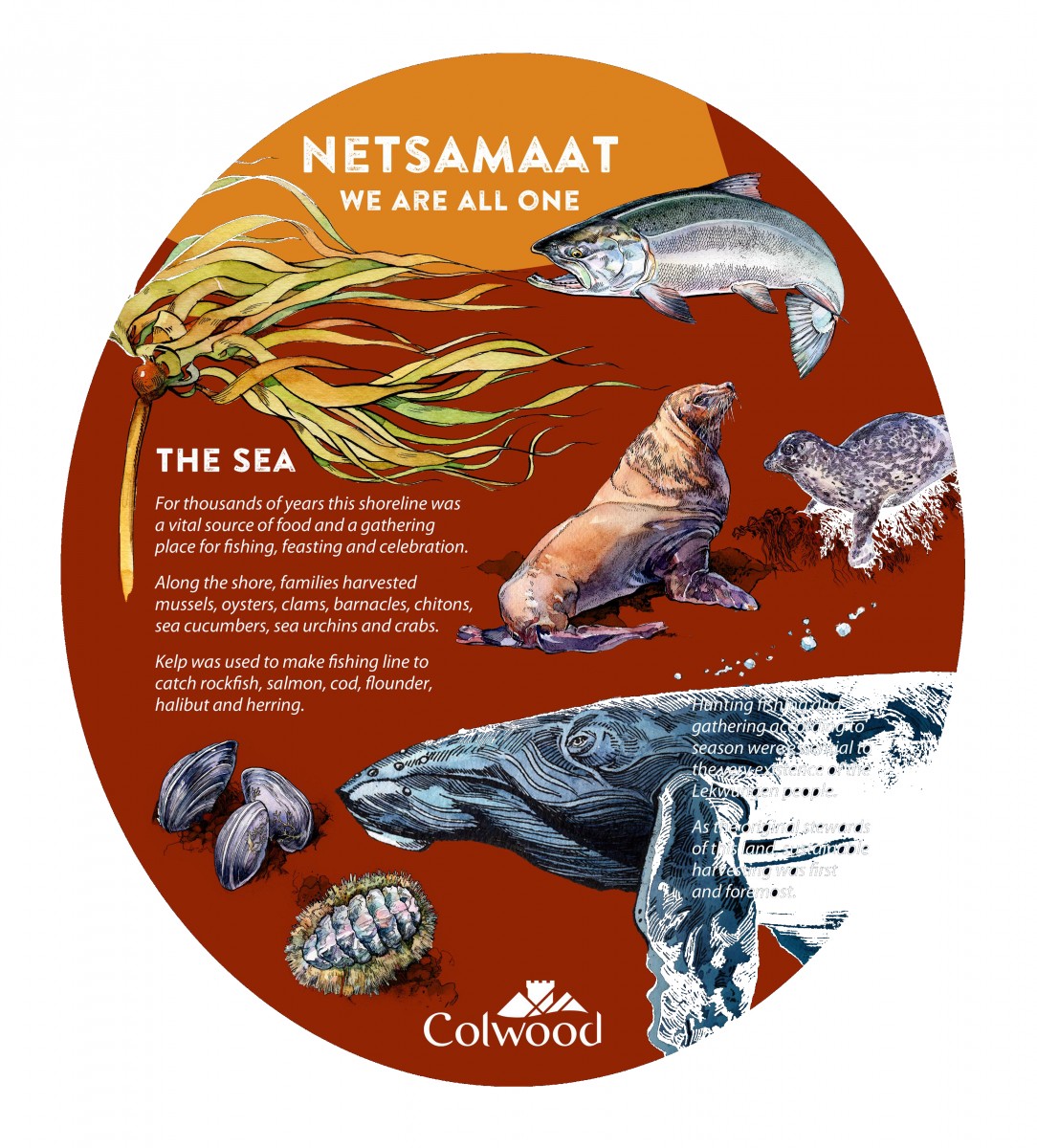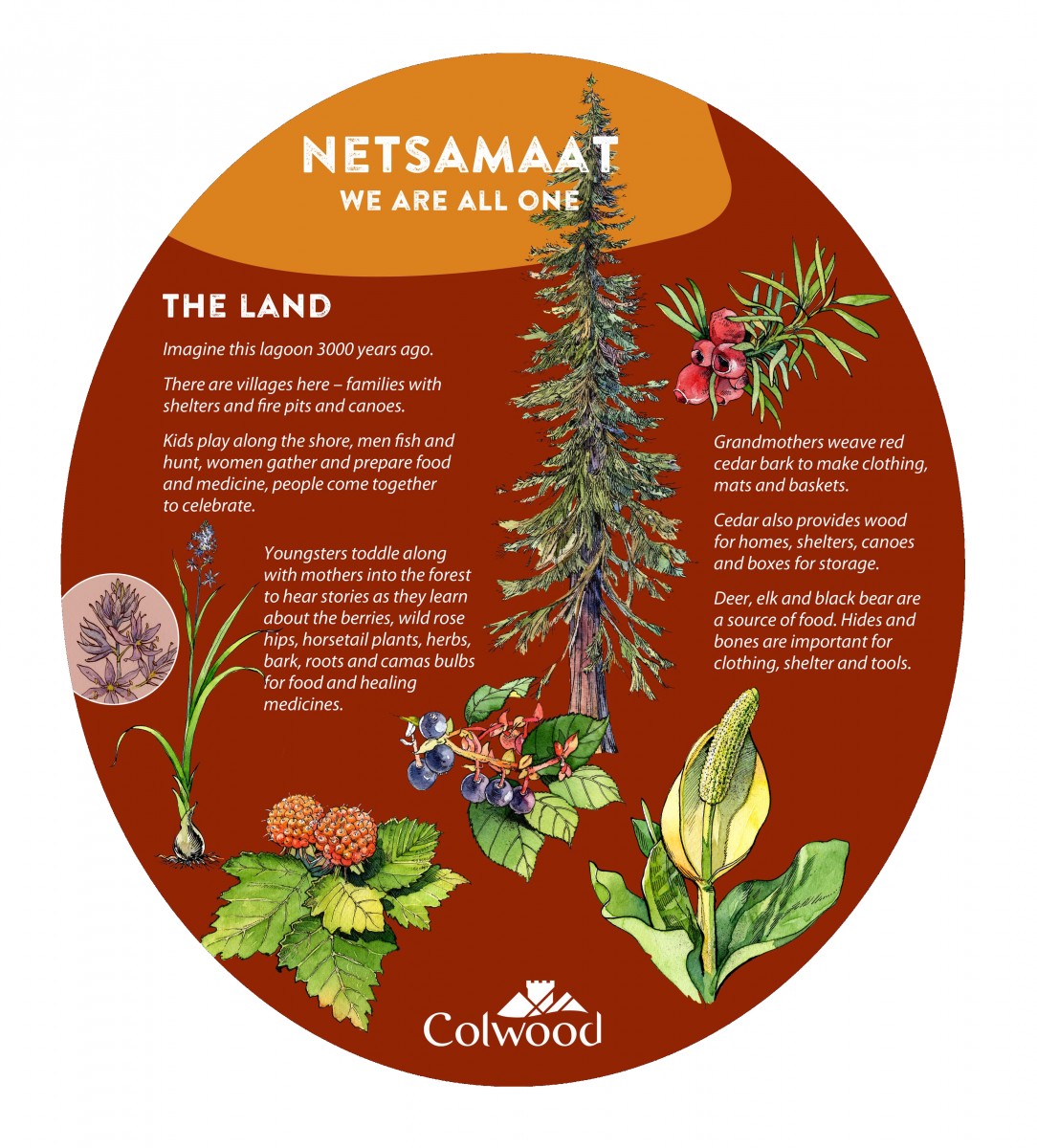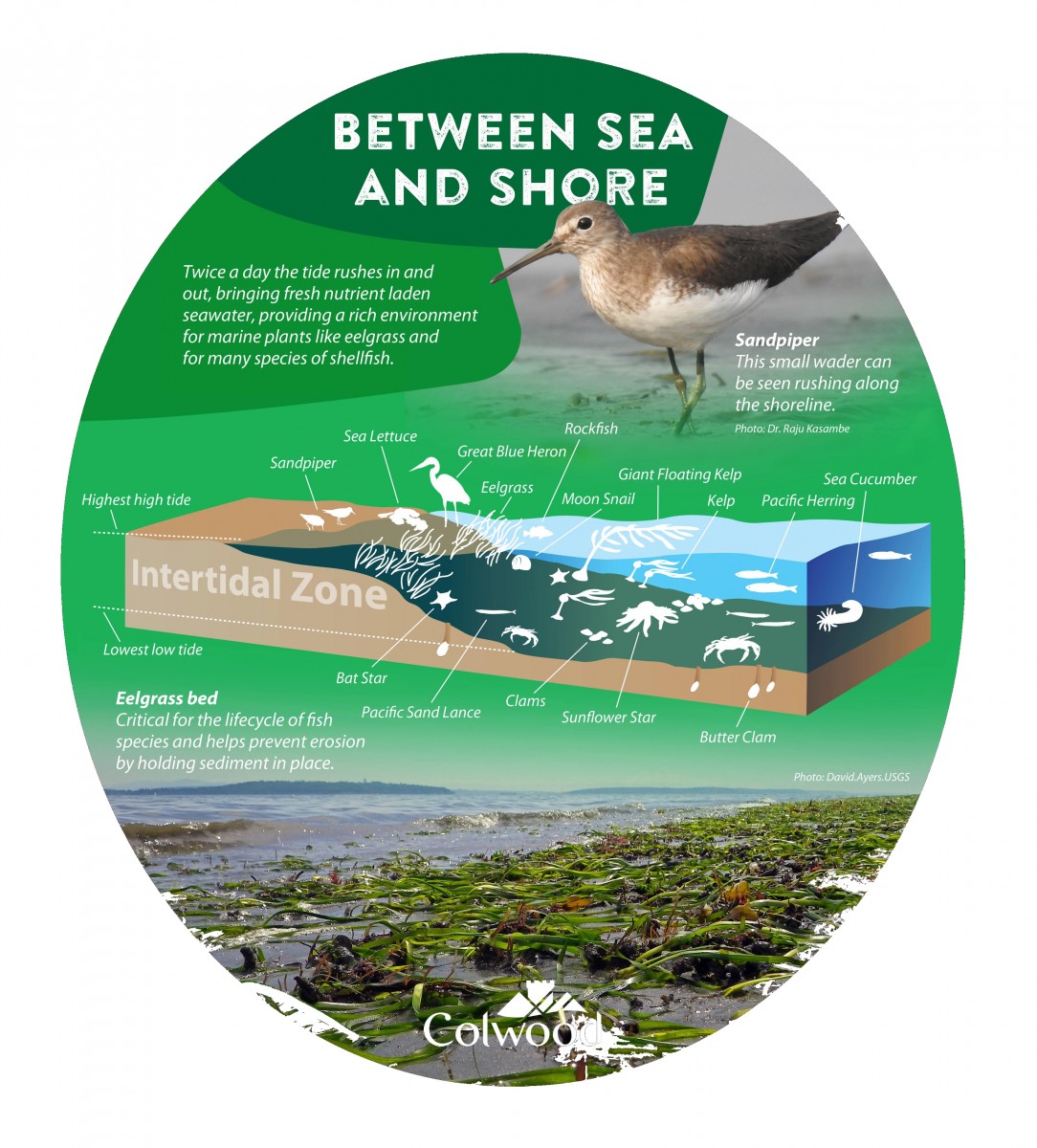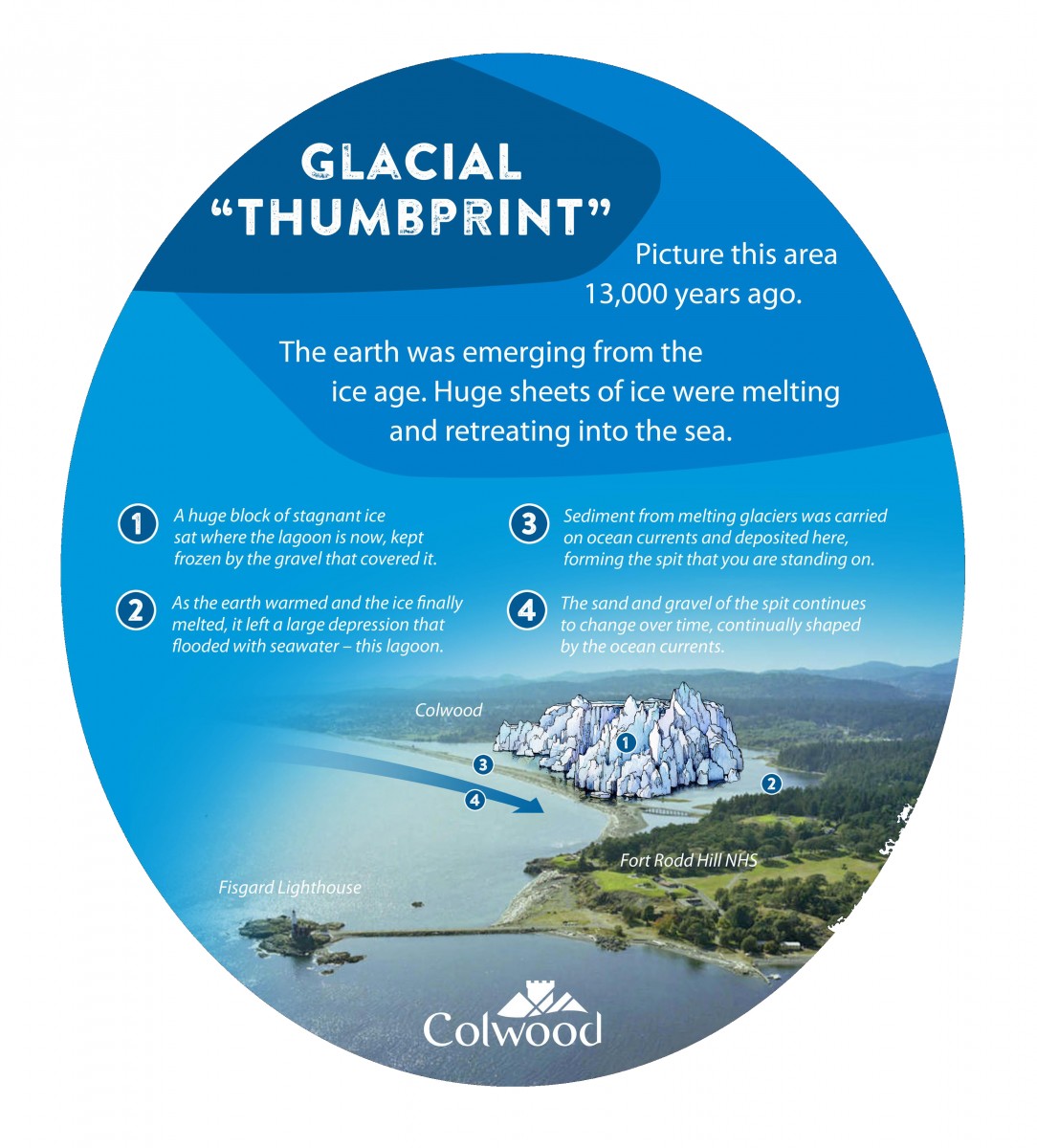This past winter was particularly rough on roads throughout the region, and Ocean Boulevard in Colwood takes an extra beating with storm surges sending salt water up onto the asphalt.
Colwood Engineering and Public Works staff have been gearing up for asphalt repairs along Ocean Boulevard while the road has been closed temporarily to limit large gatherings and slow the spread of COVID-19.
Repairs are now underway. A timeline of repairs is provided below.
Extra preparation in alignment with BC Archaeology Branch permits are needed to undertake works on this roadway that runs along the Coburg Peninsula, with Esquimalt Lagoon National Migratory Bird Sanctuary on one side and the oceanfront Lagoon Beach on the other.
There are many factors that need to be considered, including the area’s cultural and archaeological history as well as its environmental significance and unique geology.
Early cultural history
For thousands of years this shoreline is known to have been a gathering place for fishing, trading, feasting and celebration. Families harvested mussels, oysters, clams, urchins and crabs. Kelp was used to make fishing line to catch rockfish, salmon, cod, flounder, halibut and herring. Fishing this shoreline and hunting and gathering in the nearby forests according to season were essential to the very existence of early people in this area, and sustainable harvesting would have been necessary to ensure sustenance from one season to the next.
Colwood Council and staff have a deep respect for the history and culture of this area, and hope to strengthen relationships and learn from the Lekwungen people whose ancestors first lived here.
Archaeological significance
Understanding the relationship that has long existed between people and the land in the Esquimalt Lagoon area, it is not surprising that it holds special significance for the BC Archaeology Branch.
The City works closely with the Branch to preserve connections to the activities that have taken place here over time and the rich cultural history it offers for our community.
Environmental sensitivity
Esquimalt Lagoon is one of seven National Migratory Bird Sanctuaries in British Columbia and 92 in Canada.
It provides an important sheltered resting place for birds on their long migration between North and South America and a rich feeding ground for many species, including blue heron, oystercatchers, terns, widgeons, mallards, mergansers and bald eagles.
The lagoon is also an estuary, where fresh water flowing in from Colwood Creek and Bee Creek mingles with seawater to support an abundance of plant and animal life. Twice a day the tide rushes in and out, creating a rich environment for marine plants and many species of shellfish, birds and mammals.
Unique geology
Consider how the lagoon was formed 13,000 years ago when the earth was emerging from the ice age. Huge sheets of ice were melting and retreating into the sea. A massive block of ice settled here, leaving a depression. Sand and sediment were carried on the currents and deposited around it, forming the peninsula where Ocean Boulevard sits today. Nature is ever-changing, and the area continues to be shaped by ocean currents, storm surges and human activity such as the gravel operations at Royal Bay between 1910 and 2009.
Ocean Boulevard repairs in progress
The closure of Ocean Boulevard has enabled the opportunity to not just “patch pot-holes” but instead review the roadway to provide significant repair and work to extend the base service life to manage the asset, however repair options are limited as noted above due to the significant archaeological values on the lands.
The City has an ongoing archaeological permit, but it is restricted to surface works only in an effort to protect the historical record below - digging is not permitted.
Anything beyond surface works (or deeper) can only be undertaken after archaeological review and consultation with First Nations and interested parties. While these matters can be worked through, a minimum of 6 months to 1.5 years is recommended for this to occur.
With the opportunity for works, but without the time for significant archaeological review; staff met with several consultants, maintenance contractors, our own crews and our archaeological consultant to focus on works that could be undertaken within the existing archeological permit and within the current road closure. The team concluded and undertook the following;
Week 1 of the closure (March 24 to 27) - Review
- Review with engineering firms, Public Works and paving contractors; areas of concern
- Review with archaeologist; works limits, scope potential, enablement of works
Week 2 (March 30 to April 3) - Survey
- Engage a survey crew to survey road and shoulder to establish a positive drainage pattern away from the road surface and base (all the areas of significant break-down are located at the same locations where the significant water ponded / flooded occurred)
Week 3 + 4 (April 6 to 17) - Plan
- Scope project – determine rough costs
- Meet with asphalt providers to outline works / scope
- Review the project scope with the archaeologist
- Create a plan with a paving contractor and City crews working in-tandem (with individual tasks)
- Receive survey / design input for the establishment of a “minor / surface swale” with grades at the locations of ponding to enable positive drainage away from the roadway / road base.
Week 5 (April 20 to 24) - Review and Approvals
- Review and approve detailed surveys, plans and designs;establish surface layout
Week 6 (April 27 to May 1) Schedule and Implement
- Hold an archaeological meeting with contractors and staff to advise of “limits” and ensure all parties are aware of archaeological values and requirements
- Work with asphalt provider to schedule the works
- Works (paving, shoulder repair, installation of a surface drain and catchment zones) have begun and are scheduled to occur prior to May 15th.
Future plans for Ocean Boulevard
The ongoing evolution of the area, changing sea levels, environmental and cultural significance all need to be considered when making decisions about works, services, activities and future plans for this incredibly unique area.
Colwood Council has struck a new Waterfront Committee to consider the many factors that will influence decisions about Colwood's shoreline. Watch for opportunities to learn more and provide input as we work together to preserve and enjoy the area.
- 30 -
Media Contact
Sandra Russell, Communications Manager
778-677-5345
Find this release online at www.colwood.ca/News
Subscribe for Colwood news at www.colwood.ca/Subscribe
Follow @CityofColwood on facebook, twitter and instagram






